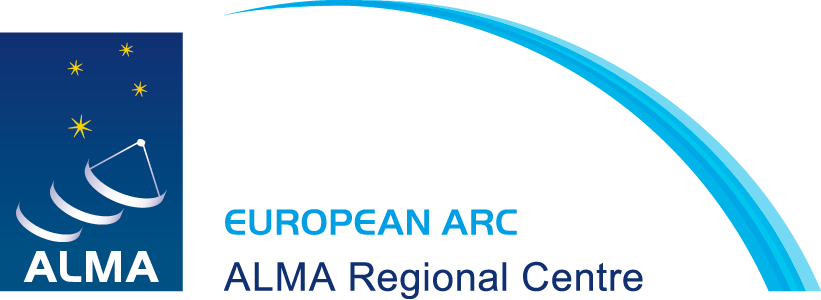Welcome to ALMA and the European ALMA Regional Centre!
ALMA (Atacama Large Millimeter/submillimeter Array) is the world's largest ground-based facility for observations in the millimeter/submillimeter regime located on the Chajnantor plateau, 5000 meters altitude in northern Chile. It enables transformational research into the physics of the cold Universe, probes the first stars and galaxies, and directly images the formation of planets. ALMA comprises a giant array of fifty 12-m antennas, which can be configured to achieve baselines up to 16 km. It is equipped with state-of-the-art receivers that cover all the atmospheric windows up to 1 THz. In addition, a compact array of 7-m and 12-m antennas greatly enhance ALMA's ability to image extended sources.
The European ALMA Regional Centre (ARC) provides the interface between the ALMA project and the European science community. It supports its users mainly in the areas of proposal preparation, observation preparation, data reduction, and data analysis.
Below you can read the latest Announcements from the European ARC Network.. More details and up-to-date information can be found in the News section and the ALMA Science Portal.
Record number of observing hours in Cycle 11
Published: 29 Oct 2025Unveiling ALMA Band 2 Workshop abstract submission deadline
Published: 28 Oct 2025Unveiling ALMA Band 2 workshop - call for abstract submission open
Published: 23 Sep 2025White Paper - Advanced Data Products for radio observatories
Published: 22 Sep 2025Registration is now open for European ALMA School 2026
Published: 01 Aug 2025Quick Links
- ALMA Web site: The main ALMA Web site maintained by the Joint ALMA Observatory.
- ALMA Science Portal: The primary web interface between ALMA and the science community.
- ALMA Helpdesk: Please use the Helpdesk to contact us for questions of any kind.


 RSS
RSS